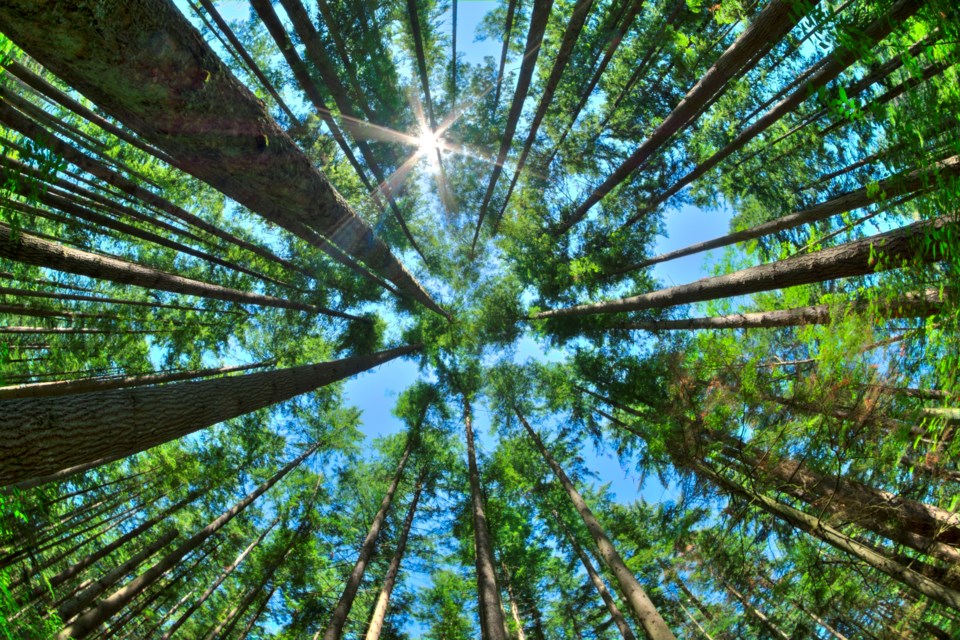With this year’s record-breaking wildfire season, politicians and the public can no longer ignore the truth – that forests are Canada’s single largest climate change issue.
One would have thought the 2016 Fort McMurray fire, Canada’s costliest natural disaster to date at over $12 billion in today’s dollars, would have led to major changes. But what we have heard from Ottawa in the years since is protection, protection, protection, and planting two billion trees.
Canada has 318 billion trees, which means two billion represents 0.6 per cent of our current forest asset and could remove, at most, a couple million tonnes (Mt) of CO2 by 2030. In 2021 alone, Canada’s wildfires released almost 300 Mt of CO2. This year will be worse. What is the point of planting more if we can’t take care of what we have? Canada’s national parks, the epitome of protection, have become carbon sources instead of sinks. Clearly, our approach is not working.
It doesn’t need to be this way. We must not fall prey to the narrative that Canada’s wildfire problems are entirely driven by climate change and that we are passive bystanders as the world hurtles towards a climate Armageddon.
What is required is a belief that we, as Canadians – or perhaps more fittingly, humans – can have a positive impact on the environment and that as the world gets hotter, the need for human intervention in forests goes up, not down.
Believing in positive action is the first step. The second is deciding what to do.
Research on the world’s boreal forests shows two diametrically opposed approaches and outcomes. On one side is Canada, Alaska, and Russia, which see massive carbon losses from wildfires. On the other are the Nordic countries of Sweden and Finland.
Canada has 50 times the disturbance rate per forested hectare as Sweden. Sweden is continuously increasing the stored carbon in its forests, having grown the standing timber volume by 44 per cent since 1980. In comparison, Canada had a net loss of over 4,000 Mt of carbon from its forest over the past 25 years – a volume equal to six years of Canada’s total greenhouse gas (GHG) emissions.
What is Sweden doing? In a complete rejection of Canada’s forest management model, Sweden harvests five times the volume per forested hectare as Canada. It uses climate smart, active management with frequent interventions to thin forest, reduce fuel loading, and contain disturbance. Is the approach perfect? Of course not. Over the past decades, Sweden has sought to improve its model by placing a greater emphasis on biodiversity. But they are constantly seeking better outcomes.
Climate smart, active forest management generates a large volume of low quality, low value wood – biomass. This is why bioenergy is so important. Not just for climate mitigation but climate adaptation. Bioenergy is the essential market for low-grade wood and residues. No bioenergy, no forest operations.
This is what Sweden and Finland have right. Fully 40 per cent of their energy supply comes from bioenergy. They could not be the lowest carbon developed countries in the world without it. And it is heat, which is almost 2/3 of Canada’s energy consumption and our largest source of fossil fuel GHG emissions, that is the primary product. In Alberta, Saskatchewan, northeast 小蓝视频, and offshore Nova Scotia, we can take climate mitigation to the next level by applying carbon capture and storage to bioenergy (BECCS), thereby permanently removing CO2 from the atmosphere.
People will say that Canada is too large and many of our forests too remote to implement active forest management. My response is this: Then why do anything at all to reduce GHG emissions?
If we aren’t willing to address our largest source of emissions and Canada’s primary climate responsibility to the world, what is the point of going through all the economic pain, consumer costs, and societal disruption of the energy transition? At least we know what we need to do with our forests. Reaching net zero energy systems without BECCS will be much harder and significantly higher cost per tonne of CO2.
Our choice is clear. If we do not change course, our forests will consistently be Canada’s largest net source of GHG emissions. If we take action using active forest management and bioenergy, we can reduce fossil fuel consumption, clear our polluted skies, preserve lives and infrastructure, improve forest health, and, when bioenergy is combined with carbon capture and storage, permanently remove the world’s GHG emissions from the atmosphere.
Doing so would transform Canada’s “climate action leader” rhetoric into reality.
Jamie Stephen is the Managing Director of TorchLight Bioresources, a decarbonization strategy and policy advisor for governments, utilities, airlines, large industrial emitters, property developers, and investment funds. He holds a PhD in Forest and Energy Economics and a Masters in Chemical and Biological Engineering from the University of British Columbia. This commentary was originally published in the Canadian Biomass trade publication.




